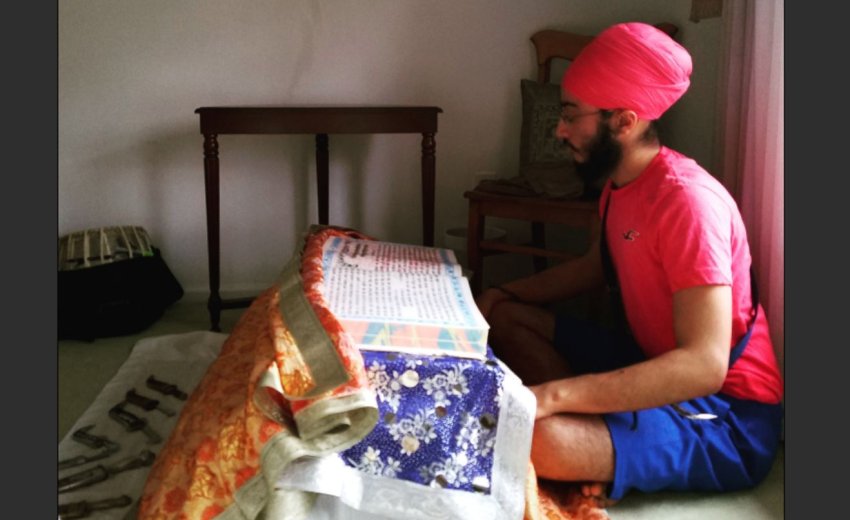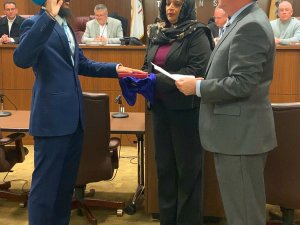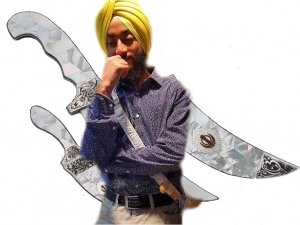On December 22, 1666 the son of Guru Tegh Bahadur Singh Ji was born. Gobind Rai was the son of the ninth Sikh Guru and Mata Gujri Ji. The story of Gobind Rai's childhood is fascinating yet inspiring. As history tells us, his father received martyrdom in an attempt to protect religious rights for those that were being persecuted and targeted by the then mughal rulers. Upon his father's shaheedi (martyrdom), Gobind Rai became Guru Tegh Bahadur Ji's successor and would become known as Guru Gobind Singh Ji.

The story of Guru Gobind Singh Ji is an incredibly powerful one, it's one that has inspired me and continues to do so everyday. When I was in Khalsa School at the Sikh Sabha Gurdwara in Lawrenceville, NJ, I remember learning about the incredible journey of Guru Gobind Singh Ji in my Virsa (history) classes. He was the well rounded individual that I always have dreamed to be. As a child he had mastered several languages including; Persian, Urdu, Gurmukhi, Braj, etc.
While he excelled in his studies he also became an adept martial artist, learning Shastar Vidhya and fighting battles at the age of 19! In September 1688, at the age of 19, Guru Gobind Singh Ji fought the Battle of Bhangani against an allied force of Bhim Chand, Garwal King, Fateh Khan and other local kings of the Sivalik Hills. The battle lasted for a day and thousands of lives were lost. Ultimately the Guru won the battle, even though he was outnumbered. At such a young age, the Guru did and accomplished so much.
Guru Gobind Singh Ji is most remembered for establishing the Sikh Faith, thus ending the years of work put in by the nine Gurus that came before him. On April 1699, the Guru initiated the Khasa Panth or the Sovereign Community. By creating the Khalsa, Guru Gobind Singh Ji did two very crucial things; first he set in stone the idea of leadership and secondly he created a community that would be tasked to protect the panth, serve the faith, and be there for everyone. Regarding the idea of leadership, after the Guru gave Amrit to the Panj Pyaare, he received Amrit from them. This broke any notion of clergy or priesthood in the Sikh Faith. Anyone has the potential to be a leader and anyone can represent the faith as long as they abide by the faith's beliefs and tenets. The Khalsa is a community of formally initiated (amritdhari) Sikhs that the Guru hoped would embody the best qualities and characteristics.
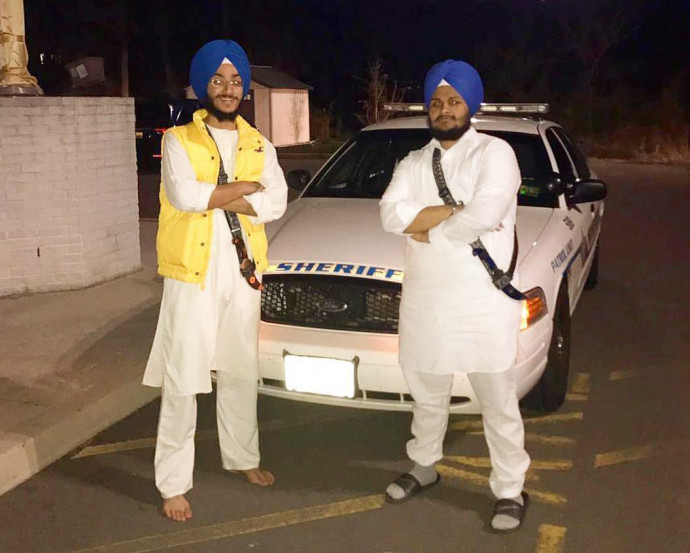
Guru Gobind Singh Ji's renowned life and journey is one of the main reasons among many others that I received Amrit at the age of 15 while I was in high school. As we all come together to remember the birth of a Guru that energized and did so much, just like the previous Gurus, let's also come together to realize how we have strayed off as a panth.
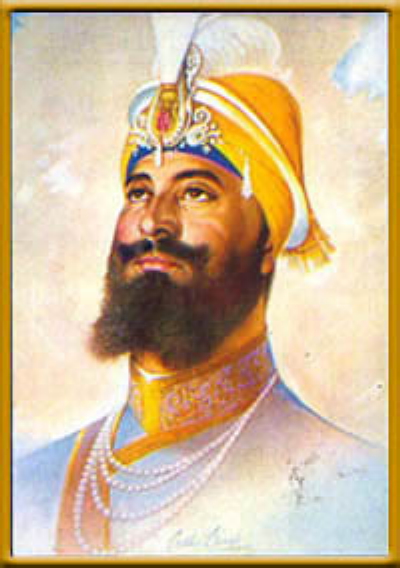
As I have grown up in America, I have seen things that seemed contradictory to what I was being taught by my parents and the information I was learning in Khalsa School. I would see members of the Sangat (congregation) partaking in rituals. I would see 'formally initiated' Sikhs act unethical. I strongly believe that Sikhs especially those that are formally initiated have a responsibility to be honest, trustworthy, and most importantly keep their moral compasses in check.
All the Gurus, but more specifically Guru Gobind Singh Ji, as we celebrate his birthday, sacrificed so much for the faith. Let's do our part to ensure that their sacrifices are not going to waste. It is imperative that we all unite, reflect, and progress by celebrating the Sikh Uniform (five articles of faith), learning about Sikh history, and putting the values/principles left by Guru Gobind Singh Ji to practice.
Dhan Guru Gobind Singh Ji, may the Khalsa continue to Rise!
